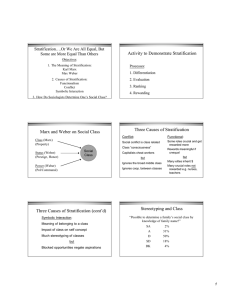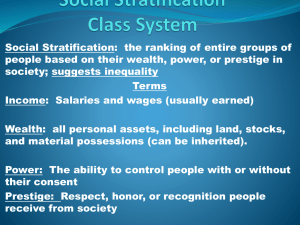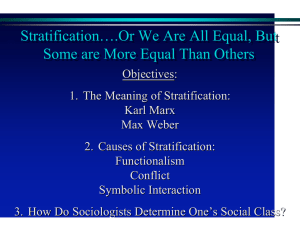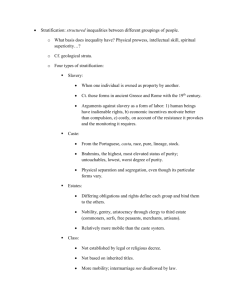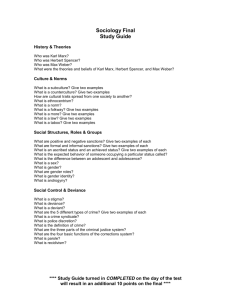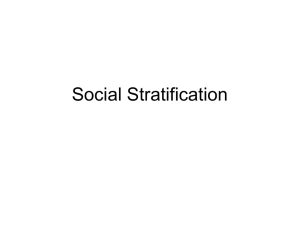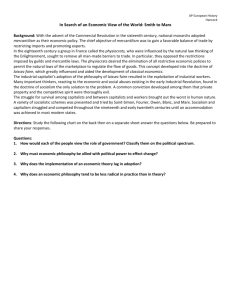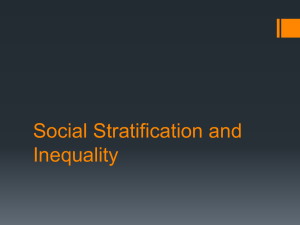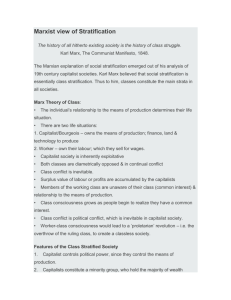Class and Stratification in the United States
advertisement
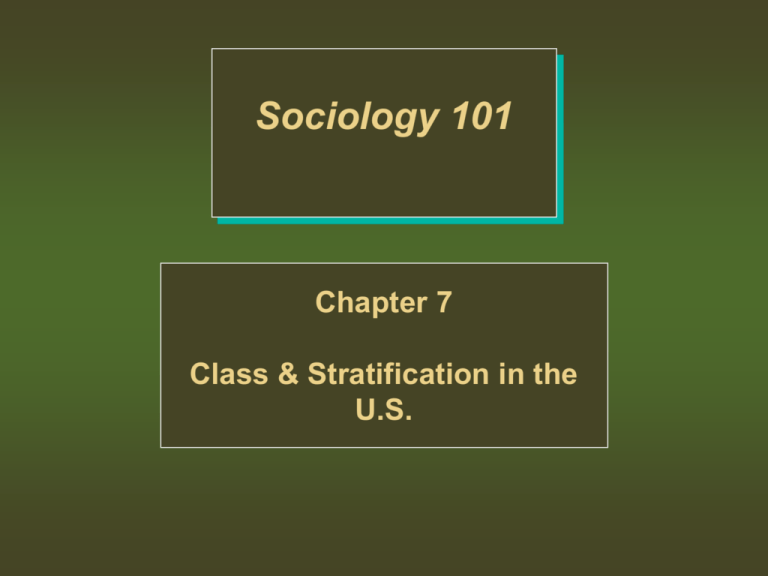
Sociology 101 Chapter 7 Class & Stratification in the U.S. Stratification: Layering of Society Slavery The caste system The class system Stratification Can Be Based On: Achieved Status Gender (Ascribed Status) Race/Ethnicity (Ascribed Status) Class (Ascribed Status) Wealth Vs. Income Wealth Refers to property such as buildings, land, farms, houses, factories and cars, as well as other assets such as stock, bonds, bank accounts, insurance policies Computed by taking the value of all of the above and subtracting all debt obligations Americans were worth about $56.8 trillion in 2010 10% of the nation’s families owns 77% of all available wealth in 2010 The richest 1% of the nation’s families are worth more than the entire bottom 90% of Americans Income Refers to wages, salaries, governmental aid, and money earned through ownership of property (e.g. rent) The top 5% receive around 20% of all income This is more than the total that the bottom 95% receive The income of the top 5% increased by 28% between 1980-1995 Source: Wealth, Income & Power (William Domhoff) http://www2.ucsc.edu/whorulesamerica/power/wealth.html Income Distribution in the United States What is Poverty? The Social Security Administration calculates the poverty line In 2010, the OPL was $22,162 for a family of 4 with 2 children under the age of 18 This is $5,540/person per year or $462/month per person Who Are The Poor? 46.2 million Americans were poor in 2010 This figure is low because it is easy for the census to miss the poor and the OPL is very low Concentration of the poor Racial minorities Women Children The child poverty rate is higher in the U.S. than in any other industrialized country Location 2/3 of poor adult population The south has the highest rate of poverty The Poor-poor Those living at or under ½ the OPL Avoiding Poverty Finish high school Get married before having your first child Don’t have a child before you reach the age of 20 Go to college Stay married Avoid alcholism/drug abuse Theories of Stratification Weberian Functionalism Conflict The Functionalist Perspective Durkheim, Kingsley Davis & Wilbert Moore Feel that stratification is inevitable and necessary for society to function smoothly Typically supports the status quo Can be summarized as follows: Society has several tasks that must be filled some positions are more important than others The most important positions need to be filled by the most qualified positions that require scarce talent and/or extensive training must be highly rewarded The most highly rewarded should be those that are functionally unique They assume that social stratification results in a meritocracy a hierarchy in which all positions are rewarded based on people’s ability and credentials Ignores inequalities based on inherited wealth, favoritism, etc. The Conflict Perspective Marx suggests that capitalistic societies consist of 2 classes: Bourgeoisie: those who own the means of production Proletariat: those who sell their labor Always a conflict between these 2 classes Workers (proletariat) are exploited by capitalists (bourgeoisie) This exploitation leads to worker’s alienation: a feeling of powerlessness Marx predicted that this exploitation would lead to class conflict Eventually, the workers would overthrow the capitalists Marx’s View of History Modes of Production: The 6 Epochs Primitive Ancient Feudal Capitalism (Slave vs. Owner (Lord Vs. Serf) (Cap. Vs. Worker) Socialism Communism The Interpretive Perspective Max Weber felt that Marx focused too much on economics Class/property/Economics Refers to Wealth & income This is what Marx focuses on Party/power/politics felt that there were other ways in which classes could be stratified CEO, Senior civil servants Status/prestige/culture People may not have much wealth or income but lots of prestige E.g. College professors, Priests Erik Wright’s Critique of Marx Wright assumes that these criteria can be used to determine the class placement of all workers, regardless of race/ethnicity, in a capitalist society: Ownership of the means of production Purchase of the labor of others (employing others). Control of the labor of others (supervising others on the job). Sale of one’s own labor (being employed by someone else).
